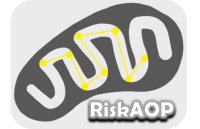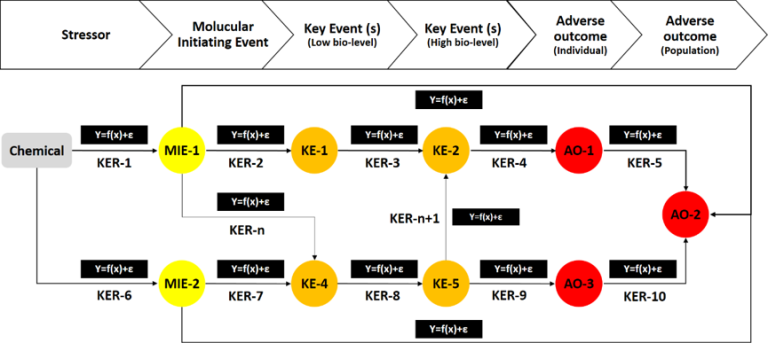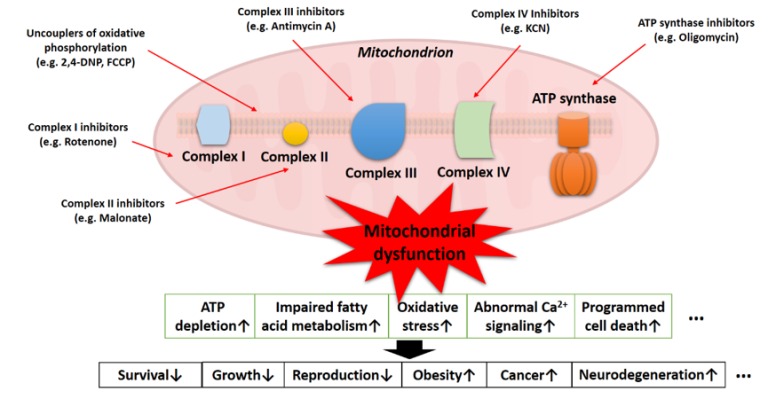RiskAOP
RiskAOP (Quantitative Adverse Outcome Pathway Assisted Risk Assessment of Mitochondrial Toxicants) is granted by the Research Council of Norway (RCN, grant No. 301397) as an independent ground-breaking (FRIPRO) project for young researcher talents.


About the project
RiskAOP (2020-2024) is granted by the Research Council of Norway (RCN, grant No. 301397) as an independent ground-breaking (FRIPRO) project for young researcher talents.
Rationale
Due to the high number of chemicals (> 160 million in the CAS registry) and species (> 8.7 million), it is not feasible and cost-effective to assess the hazards and risks of all chemicals to the ecosystems (Figure 1). In addition, a transition towards alternatives to animal testing is encouraged by both established chemical regulatory frameworks, such as Registration, Evaluation, Authorisation and Restriction of Chemicals (REACH), EU Water Framework Directive (WFD) and European Cosmetics Act, and recent initiatives, such as the US Frank R. Lautenberg Chemical Safety for the 21st Century Act, the Dutch governmental plan for phasing out animal testing for chemical safety research by 2025, and the new Norwegian Animal Welfare Act for restricting laboratory animal use.

Figure 1. Numerous combinations of chemicals and organisms motivate the development of next generation approaches for cost-efficient (eco)toxicity testing and chemical risk assessment.
Project goals
An overarching goal of RiskAOP is to develop next generation approaches for cost-efficient chemical safety evaluation and reduced laboratory animal tests. On the basis of the Adverse Outcome Pathway (AOP) concept – a conceptual data framework for integrating (eco)toxicological information across multiple levels of biological organization, taxa and stressors by causalities, RiskAOP will develop novel quantitative hazard and risk prediction models, namely Quantitative Adverse Outcome Pathways (qAOPs, Figure 2) to better align the use of New Approach Methodologies (NAMs), such as in vitro high-throughput screening (HTS), high-content (HT) toxicogenomics (OMICS) and in silico modeling with regulatory decision-making.

Figure 2. A Quantitative Adverse Outcome Pathway (qAOP) network for predicting the adverse effect of a chemical based on molecular/cellular responses in an organism.
The project will specifically focus on chemicals causing mitochondrial dysfunction which is tightly associated with various diseases in human, such as neurodegeneration, cardiovascular malfunction, diabetes and cancer, and is one of the main drivers of reduced survival, growth and reproduction in wildlife (Figure 3).

Figure 3. Chemical mediated mitochondrial dysfunction and associated biological effects.
 You Song
You Song